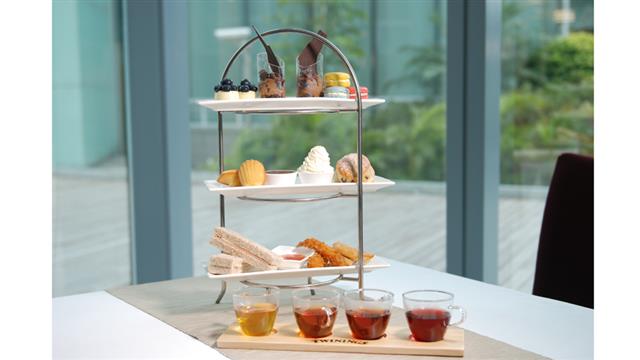Afternoon tea is usually associated with scones and sweets on a three-tier silver stand. Yet The Stage cafe of Cheng Yu Tung Building is launching an afternoon tea menu that highlights the key role of a good brew. Before being presented with the fine food, the customers will receive instructions in tea pairing, so that the dainty delights served can let the beverage work its magic on their taste buds.
For the four cups of tea, the restaurant manager suggests four varieties—jasmine, Earl Grey, wild berry, and English breakfast. As the tea goes from weak to strong, the snacks should go from savoury to sweet. Start with the sandwiches, fried shrimp and spring roll on the lowest tier—these are paired with green jasmine tea; next, the scones and madeleines, paired with berry tea, which works because it stimulates saliva flow to help buffer the drier texture of the baked items; lastly the mousse and macaron on the top tier, accompanied by Earl Grey or English breakfast, for the rich taste of the tea balances out the creaminess and sweetness.
The proper name of this English tradition is 'afternoon tea' or 'low tea', which is quite the opposite of 'high tea' commonly misused in Hong Kong. Historically, afternoon tea was a ladies' social occasion that took place around 3 or 4 in the afternoon. Food and drinks were traditionally served on low tables, hence its name. High tea, on the other hand, was originally taken as a dinner substitute by the working class at around 6 pm on a high table, and consisted of heavier and hot dishes. The highs and lows of tea is actually not so much about social standing as about its serving stand.


